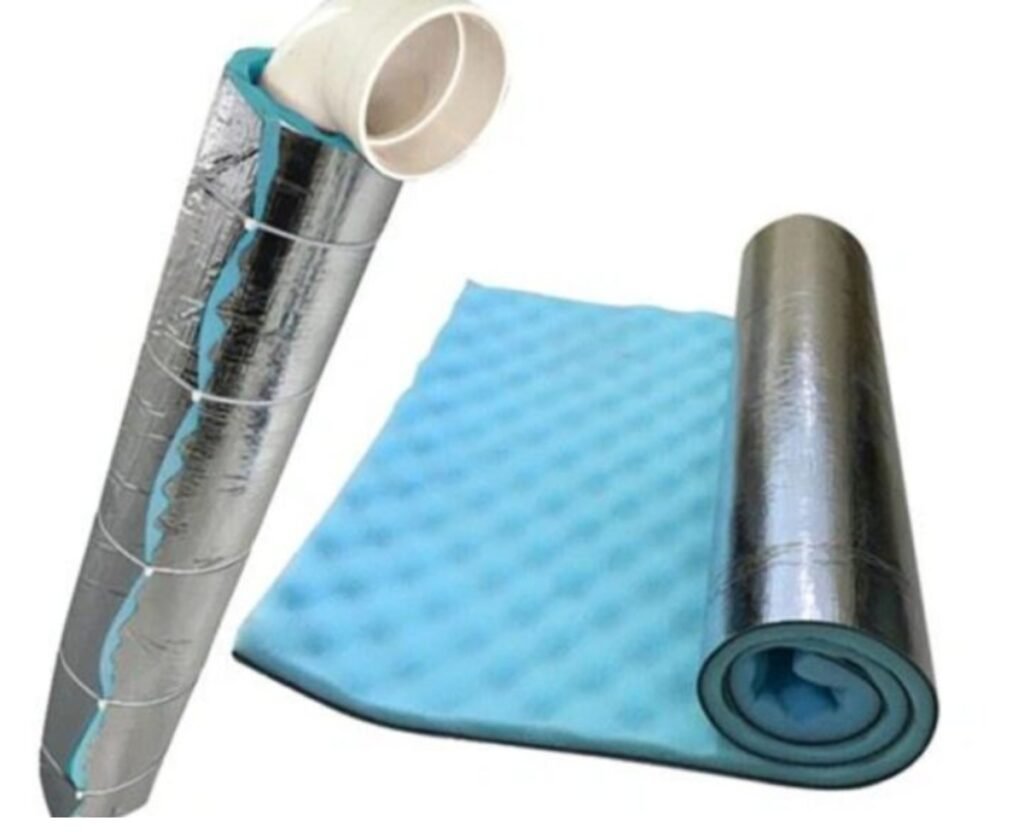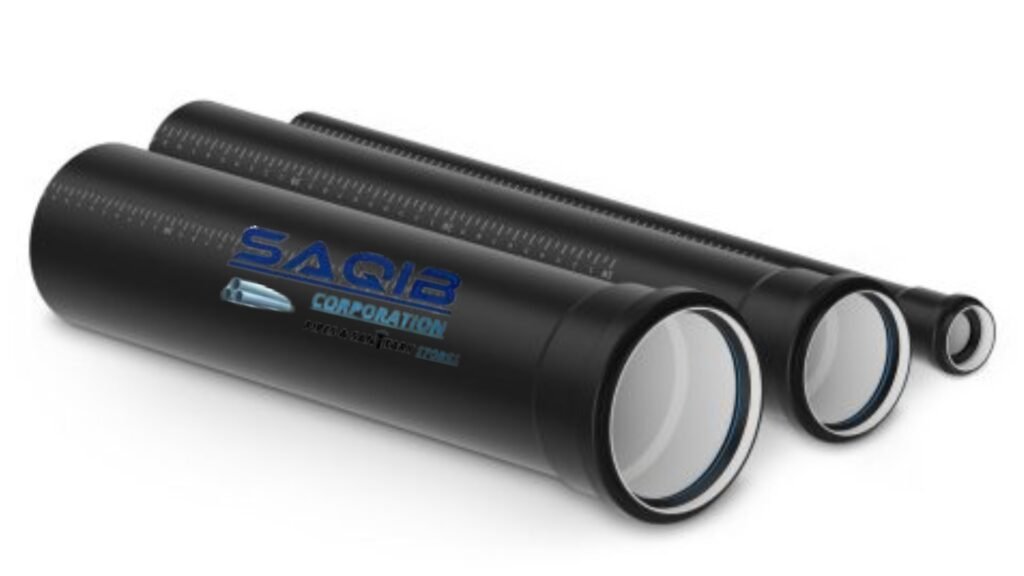Pipes and acoustic conduits are essential parts of any building. They are often hidden from view. Walls and ceilings provide little soundproofing against them. This means noise from pipes can travel easily. Acoustic conduits offer a solution. They are designed specifically to reduce noise. This creates a quieter, more peaceful environment. Soundproofing pipes during construction is ideal. However, you can also treat existing pipes. This is common in older homes with cast-iron pipes. It is also needed for copper and PVC piping. These materials create unwanted noise, too. Let’s explore how acoustic conduits work.
Studies and experts highlight the effectiveness of acoustic materials in controlling pipe noise. Research shows that dense vinyl barriers and foam composites significantly reduce sound transmission. Analysts emphasize the importance of soundproofing during construction for better results. Previous studies also reveal that retrofitting older homes with acoustic wraps or insulation can greatly reduce unwanted noise. These findings underline the value of acoustic solutions in modern building design.
Imagine a home where noisy pipes no longer disrupt your peace. Acoustic conduits make this possible by tackling sound at its source. They offer a simple yet powerful way to create quieter living spaces. As technology advances, even smarter and more efficient solutions are expected. This shift towards noise control is not just about comfort; it’s about improving well-being. With acoustic conduits, a quieter and healthier home is within reach.
What Causes Noisy Pipes?
Understanding the source of pipe noise is the first step. Sound is created when an object vibrates. These vibrations send sound waves to our ears. A pipe might bang against a wall. Water flow can cause this. Mineral buildup inside a pipe can cause a whistling sound. These are just a few examples of unwanted noise.
Every house has two main plumbing systems. The water supply system brings in treated water. The drainage system removes wastewater. Water in the supply system is under pressure. This pressure helps water travel to a second-floor bathroom or a kitchen sink. The pressure is a major reason for noisy water supply pipes. Drainpipes use gravity. They are usually less noisy. Sometimes they bang against water pipes, creating sound.
The Problem of Water Hammer
Water hammer is a specific type of pipe noise. It sounds like a knocking or banging. This happens when a valve in a high-pressure water line closes quickly. You might hear it when you shut off a faucet fast. Appliances can also cause it by suddenly closing a water valve.
Your washing machine is a good example. It fills with water traveling through a pipe under high pressure. When the machine is full, the water valve shuts abruptly. The water has nowhere to go. This can cause the water to slam against the pipes. The pipes then move. They might bang against a wall or another pipe. This creates a loud noise. Water hammer can also damage pipes if you do not address it.
Expansion in Copper Pipes
Copper pipes have their own noise issues. You might notice ticking sounds when you use hot water. This happens because hot water causes copper to expand. The expanding pipe hits surrounding objects. When the pipes cool, they contract. This contraction can create a creaking sound. Lowering the thermostat on your water heater can sometimes help. A setting of 120°F is often sufficient for most homes. If this doesn’t work, acoustic insulation is a great option.
Vibrations from Loose Pipes
Loosely attached pipes are another source of noise. Water pressure causes them to vibrate. These vibrations result in knocking sounds. You can reduce this noise by securing the pipes. Use straps to hold them firmly in place. Tightening existing loose straps also works. Wrapping the pipes with insulation is another effective method. It dampens the vibrations directly.

How to Soundproof Your Pipes
You have options for reducing water pipe noise. Two main methods exist. You can wrap the pipes with a soundproofing material. You can also fill wall cavities around pipes with sound absorption products. Using both methods provides the best results. It can eliminate pipe sounds in your home. It’s best to do this during construction. Open walls make the process simple. It is still possible to treat any exposed pipes you can access later.
Wrapping Pipes for Sound Reduction
Wrapping pipes with a dense material is very effective. It blocks noise. It also dampens vibrations. This muffles the sound of expansion and contraction. Special products exist for this purpose. Quiet Wrap™ Pipe Soundproofing Wrap is one such product. It is an industrial-grade composite. It combines a high-density sound barrier with polyurethane foam.
The foam layer is critical. Much of the noise from water pipes is vibrational. Water rushes through, beating against the pipe walls. The polyurethane foam isolates the pipe. It deadens this impact noise. The barrier layer blocks the remaining sound. This combination results in a much quieter pipe. The installation is straightforward. Many wraps have a peel-and-stick backing. This makes applying them quick and easy.
Filling the Wall Cavity
Sometimes you cannot access a pipe directly. It might be encased in drywall. In these cases, you can fill the empty wall space. Use a sound absorption product. This is a dense material often made from recycled cotton. You can install it in the space around the pipe. It eliminates sound vibrations from the piping. This type of insulation also provides thermal benefits. It keeps your home warmer in winter and cooler in summer. These materials are often Class A fire-rated. This provides peace of mind when installing them inside walls.
Materials Used in Acoustic Conduits and Wraps
Different materials are used to create effective acoustic solutions. The choice depends on the specific noise problem and conditions.
Vinyl Barriers
Dense vinyl is a common component. It acts as a noise barrier. Products like Sound Seal’s LAG Pipe & Duct Wrap use a reinforced foil-faced vinyl barrier. This material is thin and lightweight. It is easy to cut and install. The foil facing acts as a protective jacket. This makes it suitable for both indoor and outdoor applications. It can achieve a significant Sound Transmission Class (STC) rating. An STC rating measures how well a material blocks sound. Higher numbers mean better soundproofing.
Foam Composites
Foam composites offer a multi-layered approach. They combine sound blocking with sound absorption. Soundproof Cow’s Quiet Barrier® Specialty Composite is a four-layer product. It has a polyester film top layer that resists heat and tearing. Beneath that is a foam layer to absorb sound frequencies. Next is a dense soundproofing barrier layer. A final foam layer separates the barrier from the mounting surface. This separation enhances its soundproofing capabilities. The foam helps decouple the pipe from the structure. This reduces the transfer of vibrational energy.
Fiberglass Composites
Fiberglass is another excellent material for acoustic insulation. Quiet Barrier® Fiberglass Composite combines a barrier with quilted acoustic fiberglass. This material is extremely flexible. It is a great choice for tight or hard-to-reach spaces. Fiberglass also offers thermal insulation. It helps keep heat in during winter and out during summer. When you soundproof pipes with fiberglass, you get a quieter home. You also get improved energy efficiency.
uPVC Pipes
Some solutions involve the pipe itself. Special acoustic-grade pipes are available. National Plastics produces acoustic pipes made from a special grade of virgin uPVC. These pipes are designed for above-ground drainage systems. They meet European standards for sound insulation. They are compatible with standard acoustic fittings. This creates a complete soundproof drainage system from the start.
The Future of Quiet Living
Acoustic conduits represent more than just quiet pipes. They signify a shift in how we think about our living spaces. Noise is a form of pollution. It affects our health and well-being. Constant background noise from plumbing can increase stress. It can disrupt sleep. By tackling this issue at its source, we are designing healthier homes.
The future of building design will likely see acoustic performance as a standard requirement, not a luxury. Materials will become more advanced. We might see self-healing acoustic wraps. We could have smart pipes that actively cancel sound vibrations. The focus will be on creating holistic solutions. These solutions will integrate seamlessly into the building’s structure. Acoustic conduits are a key part of this movement. They are a simple yet powerful tool. They help us build a quieter, more comfortable world, one pipe at a time. This technology empowers us to control our auditory environment. It allows us to reclaim the peace of our homes.

